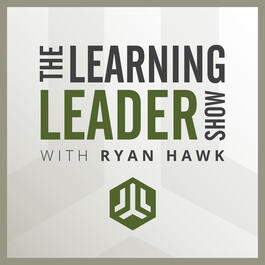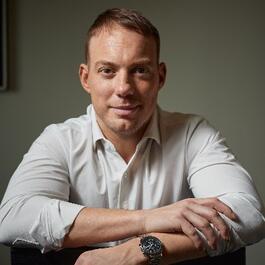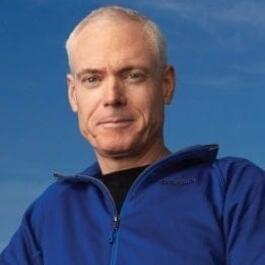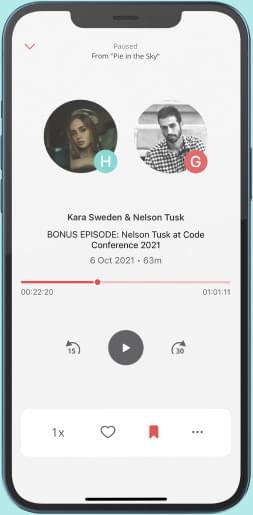
398: Jim Collins - The Art Of Getting People To Want To Do What Must Be Done (Part 2)
Text LEARNERS to 44222 for more details... Full show notes at www.LearningLeader.com Jim Collins books include Good to Great, the #1 bestseller, which examines why some companies make the leap and others don't; the enduring classic Built to Last, which discovers why some companies remain visionary for generations; How the Mighty Fall, which delves into how once-great companies can self-destruct; and Great by Choice, which uncovers the leadership behaviors for thriving in chaos and uncertainty. Jim has also published two monographs that extend the ideas in his primary books: Good to Great and the Social Sectors and Turning the Flywheel. His most recent publication is BE 2.0 (Beyond Entrepreneurship 2.0), an ambitious upgrade of his very first book; it returns Jim to his original focus on small, entrepreneurial companies and honors his coauthor and mentor Bill Lazier. Notes: What Exactly is Leadership?" "True leadership only exists if people follow when they would otherwise have the freedom to not follow." Many business leaders think they are leading when in fact they're simply exercising power, and they might discover to their horror that no one would follow them if they had no power. General Colin Powell said, "In my 35 years of service, I don't ever recall telling anyone, 'That's an order." "Leadership is the art of getting people to want to do what must be done." When Steve Jobs returned to Apple, one of the first people he called was Jim Collins. Jim asked Steve,"what did you first build upon to emerge from the darkness? What gave you hope?" Steve was talking with perhaps the greatest product visionary of our time.. so he expected him to talk about operating systems or the Macintosh computer or other product ideas. But he didn't. What did he talk about? People. "It was all about the WHO." History is the "study of surprises." There will be no "new normal," there will only be a continuous series of "not normal" episodes, defying predictions and unforeseen by most of us until they happen. This is why we double down on the "first who" principle. Track the number 1 metric: some say sales or profitability or cash flow or something about products. But there's one metric that towers above them all that's rarely spoken about in meetings. And that is: The percentage of key seats on the bus filled with the right people for those seats. How to know when to shift from "develop" to "replace?" Jim has distilled years of reflection down to 7 questions that he offers to stimulate your thinking when you face the "develop or replace" conundrum. Are you beginning to lose other people by keeping this person in the seat? Do you have a values problem, a will problem, or a skills problem? What's the person's relationship to the window and the mirror? Does the person see the work as a job or a responsibility? Has your confidence in the person gone up or down in the last year? Do you have a bus problem or a seat problem? How would you feel if the person quit? Jim spent time at West Point as the Chair for the Study of Leadership… One of they key things he learned from that time was the importance of focusing on your unit and taking care of your people, not your career… "The key to a leader's impact is sincerity. Before he can inspire with emotion he must be swayed by it himself. Before he can move their tears his own must flow. To convince them he must himself believe." - Winston Churchill Kroger made the leap because they became fanatical about getting the right people in the right seats A key position at your company does the following: Has hiring responsibility A failure by them could expose the company to disaster Their performance has an outsized impact on the business as a whole The Personal Hedgehog Concept You love to do the work You're doing something you're wired for The market will pay you for it Great success in life is when you have people in key seats that fit their hedgehog When analyzing if a person should remain on the team, ask, "What is the person's relationship with the window or the mirror?" We want people who have a tremendous capacity to grow. Be a growth machine. An example of a world-class leader? Wendy Kopp, CEO and Co-Founder of Teach For All, a global network of independent nonprofit organizations working to expand educational opportunity in their own countries and the Founder of Teach For America. "Wendy had no power and not much charisma, and yet she got hundreds of thousands of people to sign up and do work that is not fun." That's leadership. "Leadership is the art of getting people to want to do what must be done." The #1 responsibility of a leader is to catalyze a clear and shared vision for the company and secure commitment to and vigorous pursuit of that vision. From Jim, "I'm more of a teacher than a leader. What's my leadership artistry? Trust." Ann Mulcahy saved Xerox. She kept getting promoted... When asked how she earned those promotions, Anne said, "I tried to make my mini-bus a sparkling pocket of greatness." They came to her and said, "We want you to drive the whole bus."
From "The Learning Leader Show With Ryan Hawk"




Comments
Add comment Feedback